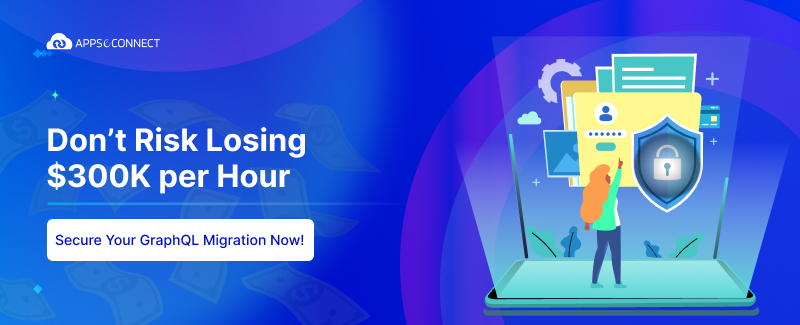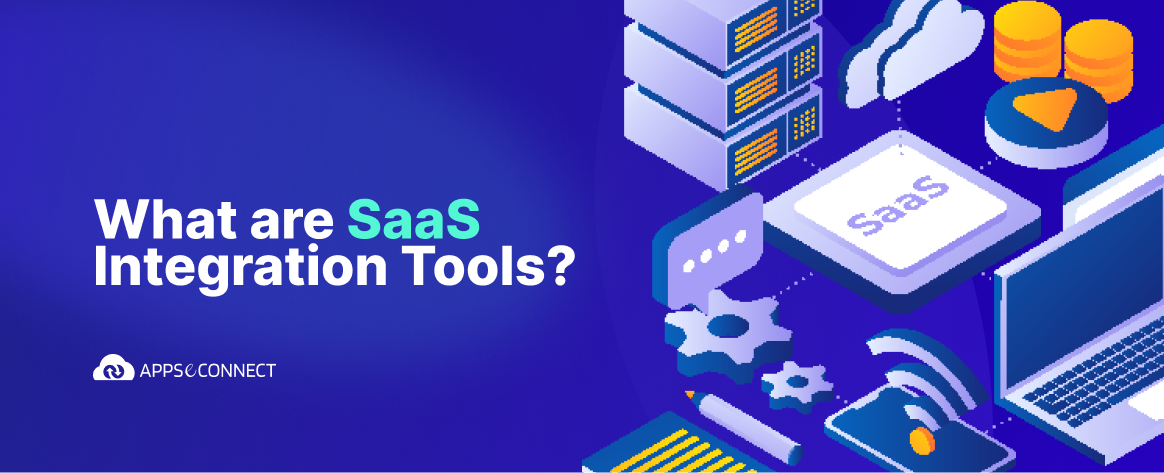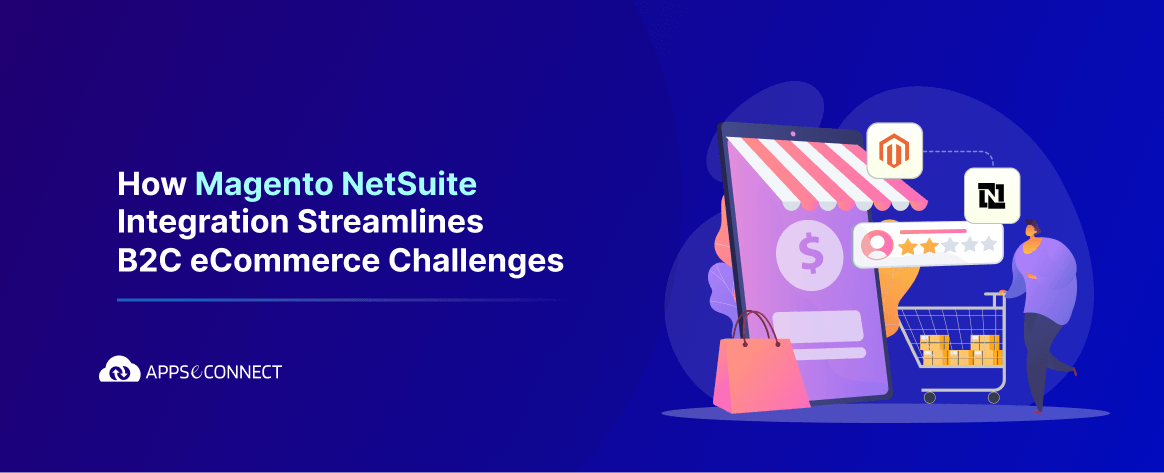Setting up and getting started with an online business can be an enriching experience. With the prediction of online retail sales reaching $1.6 trillion by 2027 in the USA alone, the eCommerce market is more lucrative than ever. With the ease Shopify offers in building online stores along with its vast library of tools and features, it is one of the top eCommerce platforms to look out for in 2023. Be it brands already running an eCommerce business with Shopify or new store owners just getting started, running an online store through the platform can be an exciting and profitable experience. However, standing out in this current aggressive eCommerce market without a proper strategy can be an uphill challenge. Thus, both veteran and new eCommerce store owners need to be equipped with the right tools and tips for Shopify to focus on the essentials and maximize their sales.
If you are using Shopify to run your eCommerce operations and want to seamlessly integrate them under a single platform to automate and streamline your business processes, then employ APPSeCONNECT’s pre-configured Shopify connectors to automate business processes efficiently and amplify your growth.
Must Have Best Practices for Shopify Stores
Before we dive into the pro tricks and tips for Shopify, there are some essential best practices that new eCommerce businesses should be wary of, and old-timers may want to brush up on. The essential best practices all businesses need to focus on for their Shopify store should include:
Designing an Impressive Website
The website is the first thing a customer experiences when shopping through an eCommerce store. Thus, ensuring that the site is visually impressive and offers a streamlined user experience is paramount for making a positive impression on the website visitors. A well-designed webstore delivers a standout impression of the brand, improves conversion rate through an intuitive interface, and builds confidence among online shoppers to make a purchase. Some basic guidelines that can help design an impactful Shopify store are to focus on accessibility and reduce visual clutter.
Using the guidelines on website accessibility published by the U.S. Department of Justice can help design a website that is easy to use for all spectrums of customers, even those with limitations. As for visual language, minimalism has become one of the top design trends for websites in recent years. A minimalist design is characterized by simple, clean shapes, and a monochromatic primary color palette accented by one or two secondary colors. The tips for Shopify users trying to build their own website would be to focus on using design templates that are minimalist and highly intuitive to navigate.
Implementing Search Engine Optimization
For eCommerce brands to be discovered on the internet, they must make sure they rank themselves on the first page of Google for the relevant keywords associated with them. Search Engine Optimization (SEO) has become an industry-standard practice for every kind of website to ensure their target audience finds them in the incomprehensively vast world wide web. SEO is the primary contributor towards channeling inbound traffic to websites and for eCommerce businesses, focusing on SEO is even more critical for customer acquisition. Implementing SEO for an eCommerce store can be an uphill challenge with the limited scope of inserting focus keywords and the substantial number of product images possibly impacting website load times.
Store owners running a Shopify webstore can leverage the platform’s built-in SEO tools to optimize website content by automatically inserting auto-generated canonical tags for created webpages to prevent duplicate content from appearing in search results. Additionally, to squeeze in more keywords outside product descriptions, leveraging the platform’s built-in blogging engine can be one of the tips for Shopify store owners for improving their website rankings.
Focusing on the Ideal Customer Profile (ICP)
Marketing campaigns play a key role in driving online sales. One of the common tips for Shopify that is overlooked by store owners is to rush into paid marketing channels without first identifying their ideal customer segments. Every business has a specific Total Addressable Market (TAM), within which it must focus on the Ideal Customer Profiles (ICPs) that share common interests, requirements, and pain points that the business can address. With a proper customer profile that outlines the demographic and behavioral details of each target group for the business, more effective advertising can be designed that offers greater conversions. Companies running a Shopify webstore can coordinate with Shopify’s eCommerce and marketing managers to identify, plan, and build the proper customer profiles to design more focused marketing campaigns.
Implementing a Robust Marketing Strategy
Behind every successful business is an impactful marketing strategy. One of the tips for Shopify stores that every business must follow is to leverage the insights of their ideal customers to develop and implement a marketing strategy that plays to the advantages of the brand. Creating targeted email campaigns, automating personalized messages for customers, and running social media ads are all possible through Shopify and are features that brands must look into to stand out from the competition. Furthermore, several apps within Shopify’s app store can also offer additional tools to help with content marketing, social media branding, retargeting campaigns, influencer marketing, and more. A comprehensive eCommerce marketing strategy comprised of both on-site and off-site marketing strategies can significantly help businesses to build brand awareness, drive customer loyalty, and increase online sales.
Top Tips for Shopify Store Owners
Now that we have covered the fundamental tips for Shopify store owners, let us delve into top tips for Shopify store owners to help boost their sales, improve customer satisfaction, and take their online business to the next level. From optimizing webstores for search engines to leveraging social media marketing, the following top tips will help both seasoned Shopify business owners to newcomers to stay ahead of the competition.
Livestream Shopping Tips for Shopify
With live streaming capabilities offered by almost all major social media platforms of today, everyone is jumping in on this emerging trend. Brands and retailers can also leverage live streaming to their advantage to further increase their sales. Through livestream shopping, the host can talk and promote their products through a live video. The biggest advantage this offers is that it combines the best of both worlds for offline and online shopping. With livestream shopping, customers get the convenience of shopping online, while the host gets to interact on a more personal level to drive greater sales. Livestream shopping is one of the often-overlooked tips for Shopify that businesses using the platform can leverage to increase their sales. Several apps are available within the Shopify App store that offer live shopping capabilities to allow brands to improve sales and brand perception through real-time communication with their customers.
Shopify Website & Customer Analytics
Good data has become indispensable for enterprises to ensure their success in the current data-driven market. Breakthroughs are being made every day on how to leverage big data to deliver more effective and engaging customer experiences. Every business’s sale, marketing, and service department need access to actionable insights to deliver the right experiences at the right time from lead generation to long-term customer retention. Accurate and up-to-date data for parameters like customer website engagement, customer segmentation, lead scoring, and other related customer analytics allow companies to deliver scalable personalized experiences with data-backed content creation and lead magnets. One of the best tips for Shopify store owners is to leverage the platform’s wide suite of website and customer analytics monitoring capabilities like online store session data, top products by units sold, total sales, and many more to implement data-driven strategies for long-term growth.
Shoppable Social Media Posts with Shopify
With over 4.26 billion social media users already existing across the globe, social media has quickly become a customer engagement channel that eCommerce brands can ignore. Having a strong social presence plays a strategic role in driving online sales. Brands with a viral product line-up across their social media accounts can further increase their sales conversions by sharing shoppable posts on social media sites like Instagram and Facebook. Shoppable social media postings shorten the customer purchasing journey by reducing the number of steps across the buying journey by bringing the users directly to the checkout. With Shopify’s Instagram and Facebook integrations, sellers can synchronize product catalogs to Facebook and Instagram, sell directly through social media platforms, and offer one-tap checkout to customers without ever having to leave Facebook or Instagram.
Enabling Return Policies
Guaranteeing that every purchase that a customer makes will be satisfactory for them is impossible. Not only is there a chance that the product is damaged or got damaged during shipping, but the customer may also have misunderstood the product and found it to not fulfill their needs post-delivery. Thus, having a proper order return policy can help fortify customer loyalty and build trust for potential customers. Providing customers with a safety net against bad purchases and a consistent way for them to return those purchased items can increase conversion and repeat sales. A well-structured return policy should include guidelines on how to return an item, what types of items can be returned, and how long customers have before an item can be returned. Customer care contact details should also be included with the policy document in case customers face any difficulties during the return procedure.
Invest in Faster Shipping with Shopify Fulfillment
Customers today expect to get their deliveries in their hands as fast as possible. More than 90% of customers expect 2- to 3-day delivery as the baseline with 30% of them expecting same-day delivery. Thus, it is imperative that eCommerce businesses focus on implementing a robust logistics network to ensure that all placed orders get delivered to the customer at the right time. In case of shipping delays, proper shipment tracking data should also be made available to the customers for them to have transparency regarding where their deliveries are within the order fulfillment pipeline. With the Shopify Fulfillment Network (SFN), brands can utilize the platform’s fulfillment services to store inventory and fulfill orders. When an order is placed, SFN picks and packs the items and ships them to the end customer, with most shipments across the US being fulfilled within two days. Additionally, Shopify also offers a robust order status page for customers to check order status, see real-time updates on shipment location, and opt-in to receive shipping updates via email.
Focus on Abandoned Cart Recovery
A common challenge faced by every eCommerce business is abandoned cart checkouts. An abandoned cart checkout takes place when a customer adds items for purchase to the cart but does not follow through with the completion of the purchase. Setting up a system to recover abandoned checkouts can enable brands to achieve a quick win regarding improved sales. The major factors that often contribute to abandoned cart scenarios include high shipping costs, an additional step of account creation, and slow delivery speeds. As previously discussed, the Shopify Fulfillment Network can be leveraged to offer faster deliveries. On the other hand, Shopify also allows customers to check out as a guest, instead of logging in to an account. Additional tips for Shopify store owners to reduce abandoned cart recovery is to offer free shipping over a certain purchase volume or use Shopify’s automated email features to send email reminders to shoppers and encourage them to return and complete their purchases.
Using Shopify Blogs for Content Marketing
Blogging is the predominant factor driving content marketing and plays a significant role in SEO ranking and inbound sales. Blogs are the most frequently updated sections of a website, and it is primarily through blog content that customers first come to discover brands. With a regularly maintained blogging pipeline with content that covers the focus keywords of the brand, a business can consistently put out fresh content that can help them improve their search results for Search Engine Results Page (SERP). One of the best tips for Shopify store owners is to leverage the platform’s built-in blogging tools to create a dedicated section to consistently output SEO-rich blogs. The eCommerce platform offers a range of blog creation and advanced publishing tools to help streamline the continuous production of fresh engaging content.
Cut Down Inventory Costs with Dropshipping
Dropshipping is a recently growing trend among new eCommerce business owners where the business does not keep an inventory of the product it sells, instead purchases inventory as needed from a wholesaler or manufacturer and gets it directly delivered to the end consumer. With dropshipping primarily depending on third-party manufacturers and distributors for keeping inventory and fulfilling orders, the business model offers great flexibility to be either managed by a team of employees or a single business owner. Shopify allows its users to get started with dropshipping with its built-in functionalities to allow customers to place orders on the online store and automatically send the order details to the dropshipping supplier for order fulfillment. With Shopify dropshipping, brands, and retailers can get started with their business with minimal costs, experiment with new products, suppliers, and sales channels, and effortlessly less to a global market.
Be Mobile Commerce Ready
Not everyone may own a personal desktop or laptop but nearly everyone owns a smartphone today. The number of purchases made through mobile channels is expected to exceed USD 400 billion in 2023. With such a big market size, eCommerce business owners cannot leave mobile commerce outside their scope of operation. Mobile commerce has the potential to become a major channel for eCommerce businesses to change consumer shopping habits and expand their business reach. Developing a native mobile app can be an expensive and time-consuming process. However, there are several Shopify app builders available in the market that can enable companies to readily launch iOS and Android apps in a fraction of the time and cost with template-based or graphical app builders.
Implementing Shopify Automation through Integration
Managing bulk eCommerce processes manually can be a time-consuming and error-prone process that can lead to several hurdles to business growth. Thus, end-to-end business application integration plays a fundamental role in streamlining workflows across the organization to enable faster time to market and business scalability. With a low-code Business Process Automation (BPA) platform like APPSeCONNECT that allows users to design, deploy and manage all their integrations through a visual integration designer, Shopify store owners can effortlessly integrate their webstore with all their software stack. Some rule-of-thumb tips for Shopify integration include identifying workflows that can benefit from automation and integrating them through an intelligent integration platform. By implementing Shopify automation through integration, businesses can save time and improve their business efficiency. With the right tools and automation in place, brands can focus on growing their business and providing the best possible experience to customers.
Wrapping Up the Top Tips for Shopify
Running a successful Shopify store requires a combination of strategic planning, continuous optimization, and exceptional customer service. By implementing the top tricks and tips for Shopify, store owners in 2023 can improve their store’s visibility, conversion rates, and customer loyalty. By leveraging the strategies of optimizing the eCommerce site for mobile devices, leveraging social media for marketing, offering personalized shopping experiences, and providing excellent customer support store owners can stay ahead of the competition and continue to grow their business in 2023 and beyond.
If you are using Shopify to run your eCommerce operations and want to seamlessly integrate them under a single platform to automate and streamline your business processes, then employ APPSeCONNECT’s pre-configured Shopify connectors to automate business processes efficiently and amplify your growth.




















